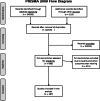Occupational noise exposure and hearing: a systematic review
- PMID: 26249711
- PMCID: PMC4786595
- DOI: 10.1007/s00420-015-1083-5
Occupational noise exposure and hearing: a systematic review
Abstract
Purpose: To give a systematic review of the development of noise-induced hearing loss (NIHL) in working life.
Methods: A literature search in MEDLINE, Embase, Web of Science, Scopus, and Health and Safety Abstracts, with appropriate keywords on noise in the workplace and health, revealed 22,413 articles which were screened by six researchers. A total of 698 articles were reviewed in full text and scored with a checklist, and 187 articles were found to be relevant and of sufficient quality for further analysis.
Results: Occupational noise exposure causes between 7 and 21 % of the hearing loss among workers, lowest in the industrialized countries, where the incidence is going down, and highest in the developing countries. It is difficult to distinguish between NIHL and age-related hearing loss at an individual level. Most of the hearing loss is age related. Men lose hearing more than women do. Heredity also plays a part. Socioeconomic position, ethnicity and other factors, such as smoking, high blood pressure, diabetes, vibration and chemical substances, may also affect hearing. The use of firearms may be harmful to hearing, whereas most other sources of leisure-time noise seem to be less important. Impulse noise seems to be more deleterious to hearing than continuous noise. Occupational groups at high risk of NIHL are the military, construction workers, agriculture and others with high noise exposure.
Conclusion: The prevalence of NIHL is declining in most industrialized countries, probably due to preventive measures. Hearing loss is mainly related to increasing age.
Keywords: Cardiovascular risk factors; Chemicals; ISO; Leisure-time noise; Mechanisms; NIHL; Population studies; Vibration.
Figures




References
-
- Almstedt AC, Gustafsson T, Axelsson A. Risk of hearing damage in connection with pop and rock concerts. The maximum permissible sound level should be legally confirmed. Lakartidningen. 2000;97(10):1102–1104. - PubMed
-
- Arbejdstilsynet D (2007) Støj. At-vejledning D.6.1
Publication types
MeSH terms
LinkOut - more resources
Full Text Sources
Other Literature Sources
Medical

